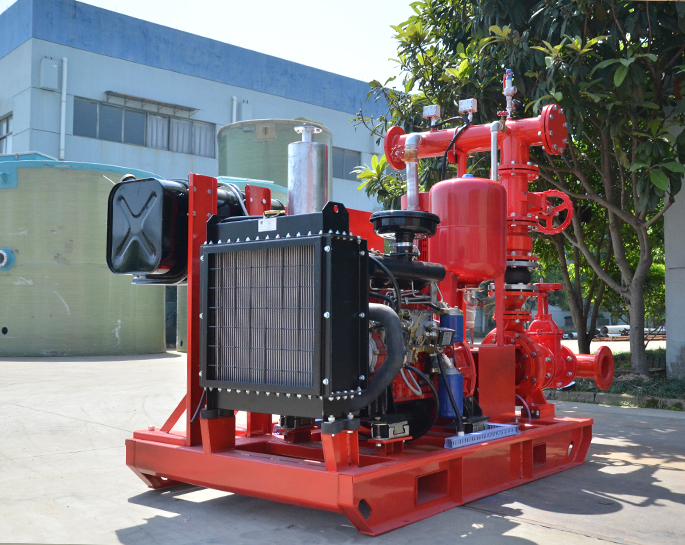What are the basic technical knowledge of fire pumps?
Understanding the basic technical aspects of fire pumps is essential for those involved in the design, installation, operation, and maintenance of fire protection systems. Here are key technical aspects related to fire pumps:
-
Pump Types:
- Centrifugal Pumps: Most commonly used for fire protection systems, these pumps use centrifugal force to move water. They are efficient and reliable for providing the required flow and pressure.
-
Performance Characteristics:
- Flow Rate: The volume of water delivered by the pump, measured in gallons per minute (GPM) or liters per second (L/s).
- Pressure: The force exerted by the water, typically measured in pounds per square inch (psi) or kilopascals (kPa).
- Head: The total energy imparted to the water, expressed in feet or meters. It includes both pressure and elevation.
-
System Components:
- Intake and Discharge Piping: Piping systems that bring water to the pump (intake) and distribute it to the fire protection system (discharge).
- Control Panel: Manages the operation of the fire pump, monitoring conditions and activating the pump when needed.
- Valves: Suction and discharge valves control the flow of water into and out of the pump.
-
Pump Driver:
- Electric Motors: Commonly used for fire pumps, these motors provide reliable and consistent power.
- Diesel Engines: Backup or primary power source in case of electrical failure.
-
Cavitation:
- Cavitation occurs when the pump operates at a suction pressure too low for the water to remain in liquid form. It can cause damage to pump components, and preventive measures are necessary.
-
NPSH (Net Positive Suction Head):
- Ensures that the pump is receiving sufficient water to operate without cavitation. NPSH is a critical consideration during pump selection and system design.
-
Impeller Design:
- The impeller is a key component that imparts energy to the water. Understanding impeller design and its impact on pump performance is crucial.
-
Jockey Pump:
- A smaller pump that maintains pressure in the fire protection system between activations. It prevents the main fire pump from frequently starting and stopping.
-
Performance Curves:
- Graphical representations of a pump's performance under various conditions, including flow rate and head.
-
Testing and Maintenance:
- Regular testing ensures the pump operates within specified parameters.
- Maintenance involves inspections, lubrication, and the replacement of worn components to prevent failures.
-
NFPA Standards:
- Familiarity with National Fire Protection Association (NFPA) standards, particularly NFPA 20, which provides guidelines for the installation of stationary fire pumps.
-
Flow Test and Annual Inspection:
- Conducting flow tests to verify the pump's ability to deliver the required flow and pressure.
- Annual inspections involve a comprehensive review of the pump and its components.
-
Local Regulations:
- Knowledge of local building codes and regulations that dictate the design, installation, and maintenance of fire pumps.
-
Emergency Operation:
- Understanding emergency procedures and protocols in case of a fire or pump failure.
Staying informed about these technical aspects ensures the proper design, installation, and operation of fire pumps, contributing to the overall effectiveness of fire protection systems. Consulting with experienced professionals and referring to relevant standards and guidelines is essential in this regard.


.png)
.png)

.png)


